Katrin Küllenberg is a mother of four and a family & wedding photographer based in Germany. As her children grew older her photography business began to play a larger role in her day to day and, although she started her business as a documentary wedding photographer she found that shooting families was still her favorite thing to do. She says she found it “very exciting to come into close knitted families and discover how they interact, what are their roles and relationships among each other, to see how they tick.” She also states that her goal as a photographer is to help her clients “discover themselves, to notice the familiar but also find out something new.”
Today we are featuring a few images from one of her sessions, but you can check out more of her work on her website, Facebook, and Instagram.
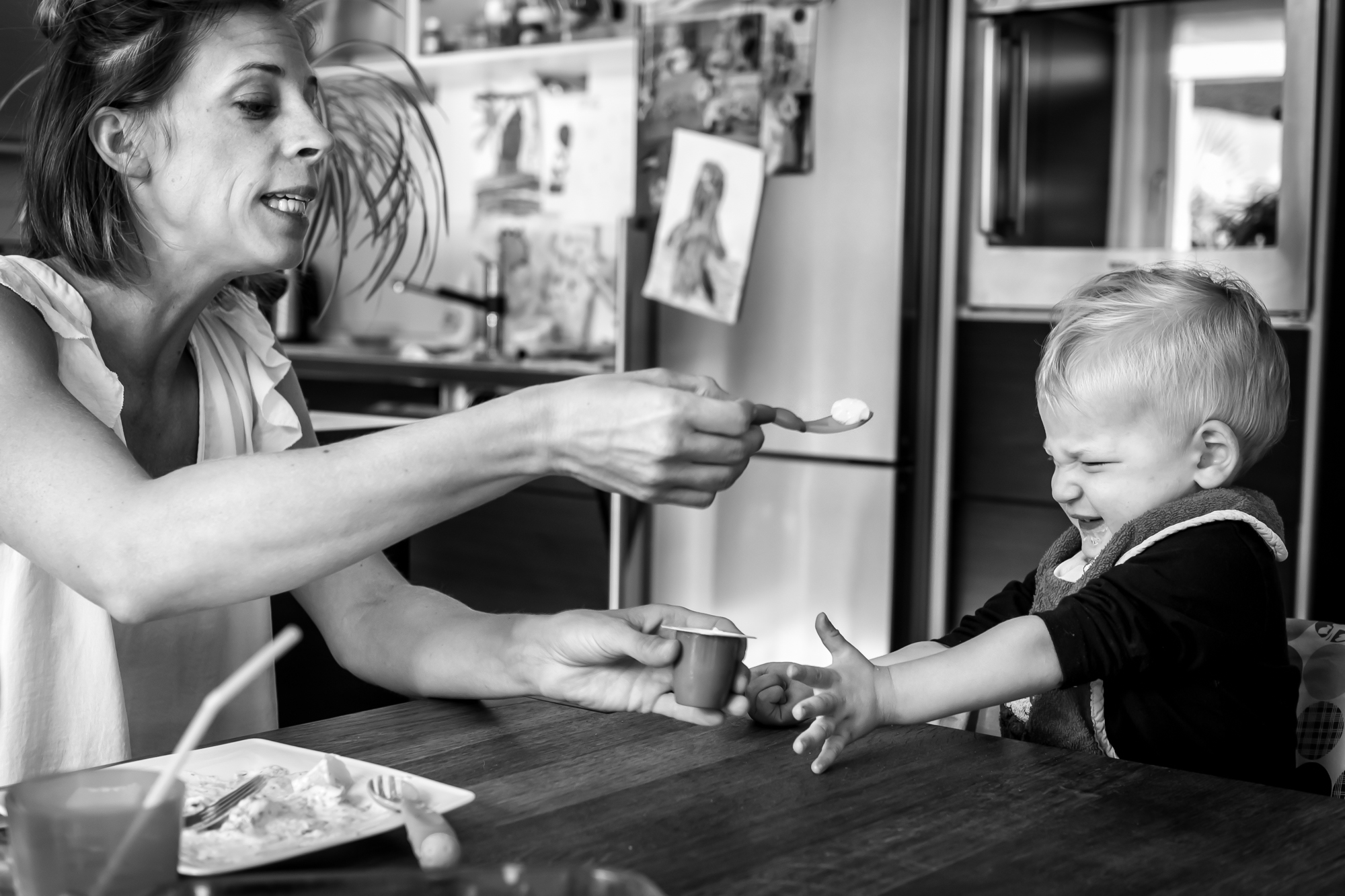
Carrie: I love the idea of wanting your clients to discover something new about themselves through your photography. Can you give us an example of this that perhaps a client has shared with you after they viewed their photos?
Some clients told me that the images make them see their family from an outsider’s point of view. I show them a lot of special moments they have been taking for granted but now those seem like a precious gift that they tend to value more.
Especially parents with several children suddenly notice the special characteristic traits of each kid and his/her standing in the family, things they sometimes failed to see in their everyday routine.
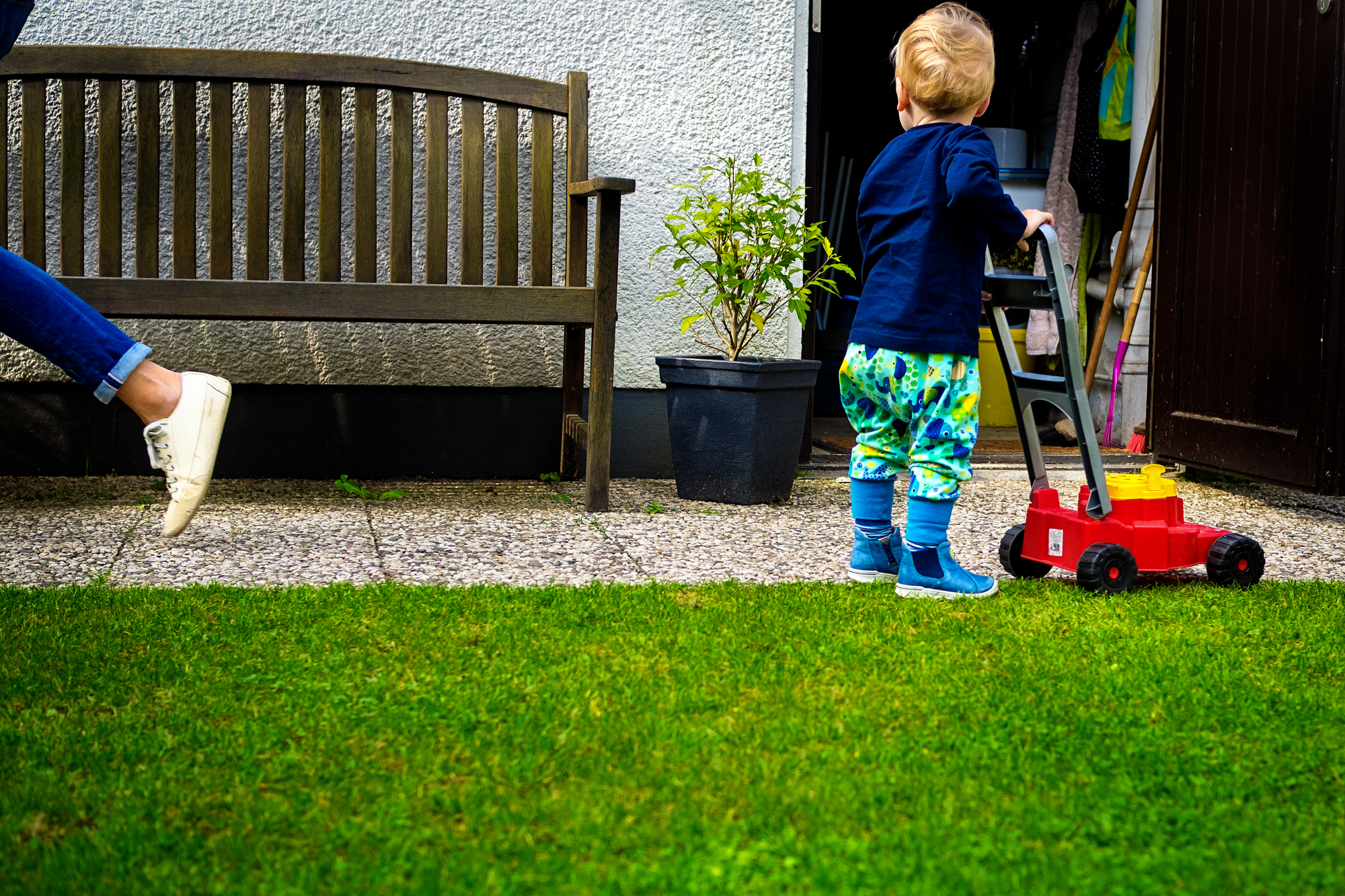 Erika: I love the unconventional crops you choose to submit. Are you generally setting up the compositions in camera or are they more a decision in post?
Erika: I love the unconventional crops you choose to submit. Are you generally setting up the compositions in camera or are they more a decision in post?
When I started with photography I tended to crop a lot in post but after all those years now I hardly ever need to. I compose in camera and slightly adjust my angle while shooting. I control results directly on my LCD and have noticed that not having the camera in front of my eye the whole time also frees my vision. I check my monitor but also register what is happening outside the range of my lens. I usually know what I am looking for in an image but I think that only comes from experience, meaning you have to practice a lot.
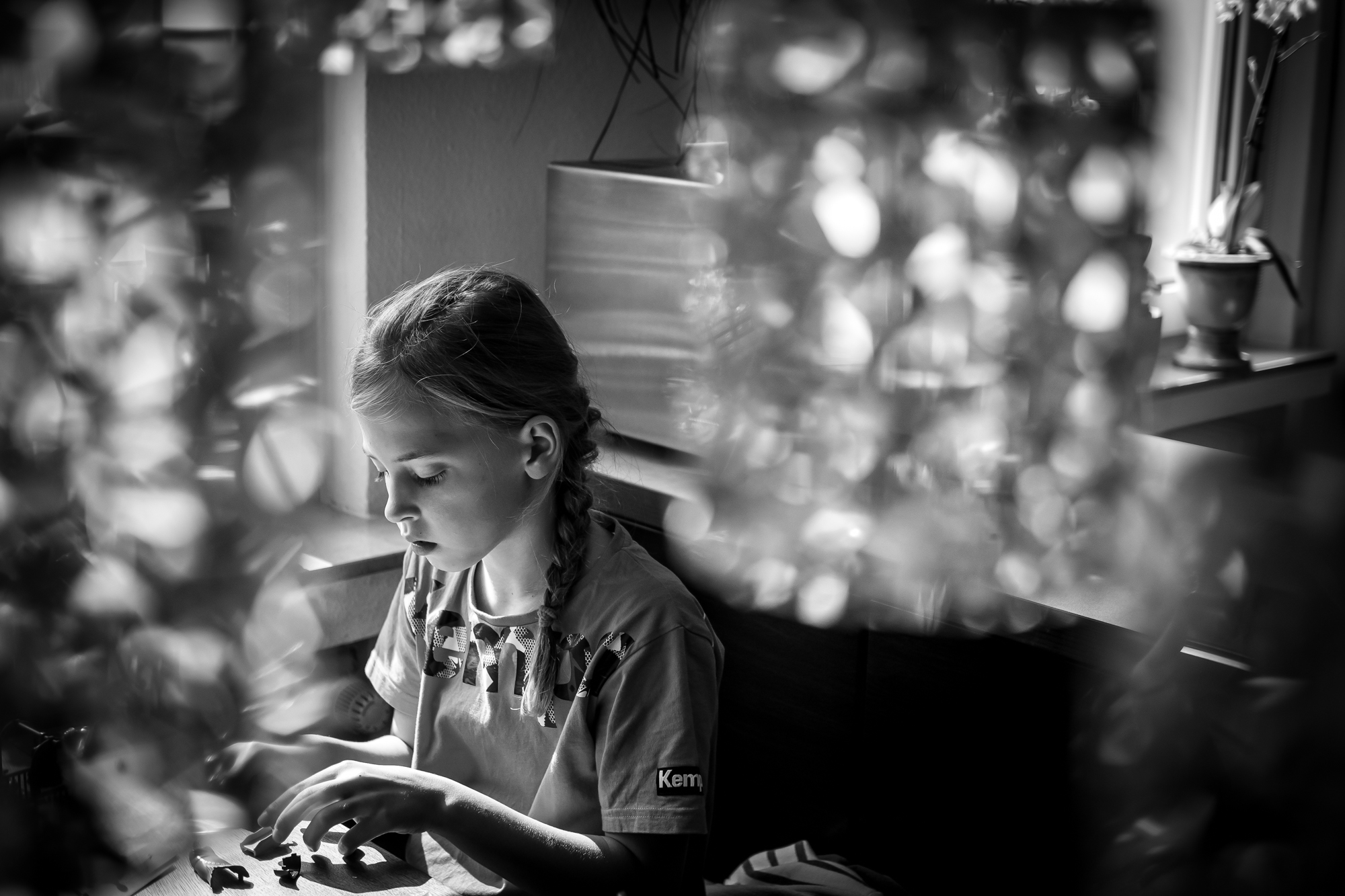 Lisa: You’ve captured great quiet moments. I myself am drawn to those as well. How do you approach a family that is more chaotic and less quiet?
Lisa: You’ve captured great quiet moments. I myself am drawn to those as well. How do you approach a family that is more chaotic and less quiet?
Chaos is growing with the number of kids in a family. I love photographing big families where a lot is happening. I have four kids myself so I am used to it. For me the problem is rather that one tends to concentrate on the kids who put on the show. Lively kids are easy for a photographer, you just have to follow them and you can be sure something wild or weird will happen. I try to get close to the action even when it is getting rough sometimes, but in general, chaos is perfect for the photographer. You don’t have to think a lot about what you are doing – great moments are happening and you just have to capture them with your camera.
But I sometimes really have to force myself to give due to all the kids in a family. There often is a quiet one who prefers to stay apart, to read or draw and for a photographer this can be “boring” visually. But this is important stuff, too, as it shows the character of that child. So, for me, it is far more demanding to render those moments in a profound and creative way, to show the beauty of a quiet moment. In those situations it is very important that you know how to compose an image and not just simply snap a picture and be done with it.
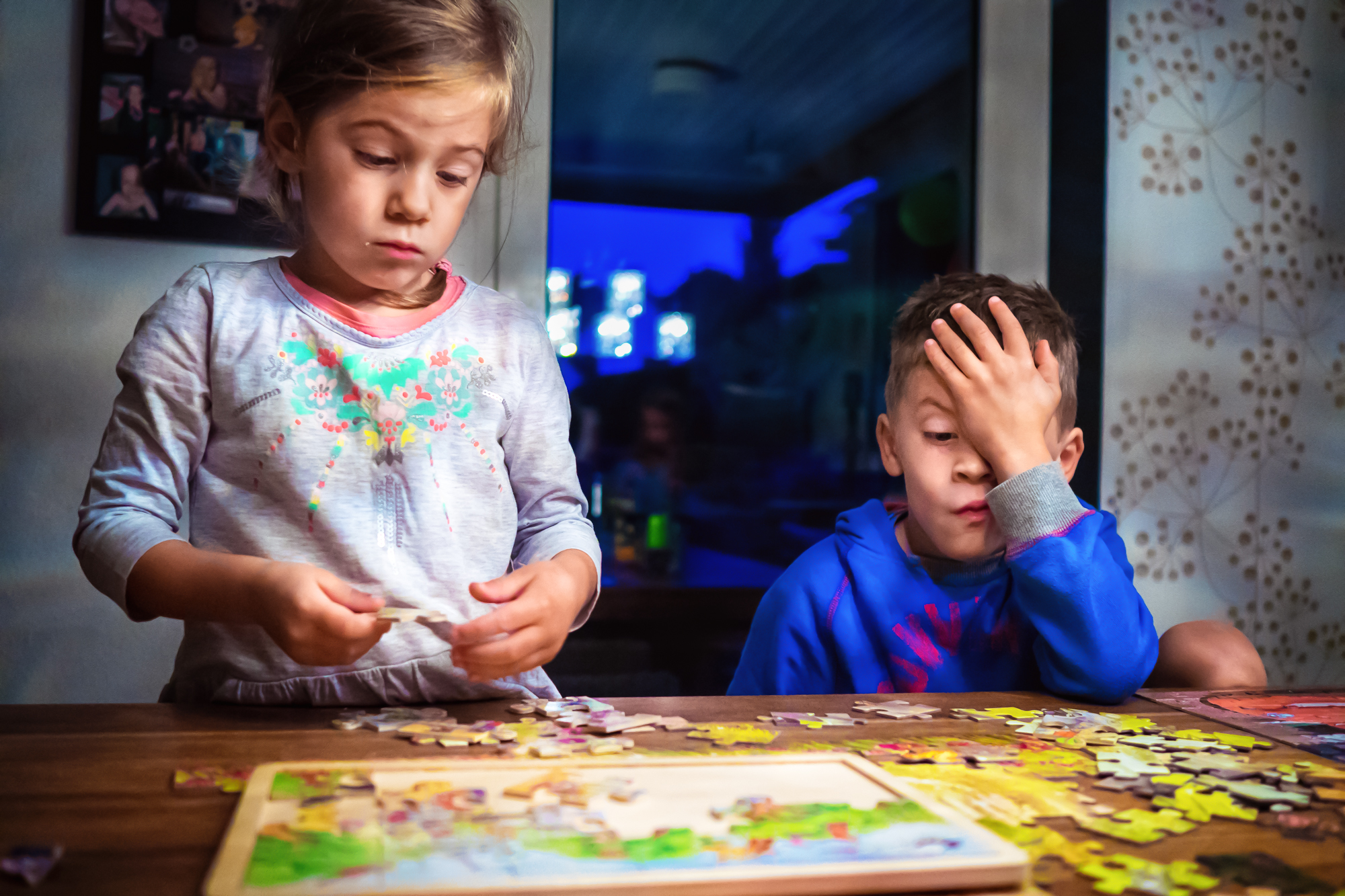 Chrystal: I noticed you used a lot of lenses. Are you typically switching lenses throughout the session or do you stick with a favorite for the majority of the time?
Chrystal: I noticed you used a lot of lenses. Are you typically switching lenses throughout the session or do you stick with a favorite for the majority of the time?
I usually have six lenses and two cameras with me. I mostly use prime lenses indoors when there is bad lighting and take my two zoom lenses (12-40mm and 40-150mm) when we are outside. I noticed that inside the house kids don’t mind you being close to them but when they are playing outside they want to run around and be on their own.
My favourite lenses are my 12mm, 17mm and 25 mm ( that means 24mm, 35mm and 50 mm fullframe). I know, this does not sound like a great variation but depending on the rooms I am working in a change in lenses can sometimes be crucial. Standing in a tiny bathroom with four other people will have you coaxing the most out of your 12 mm whereas a big living room can leave you happy with your 25 mm.
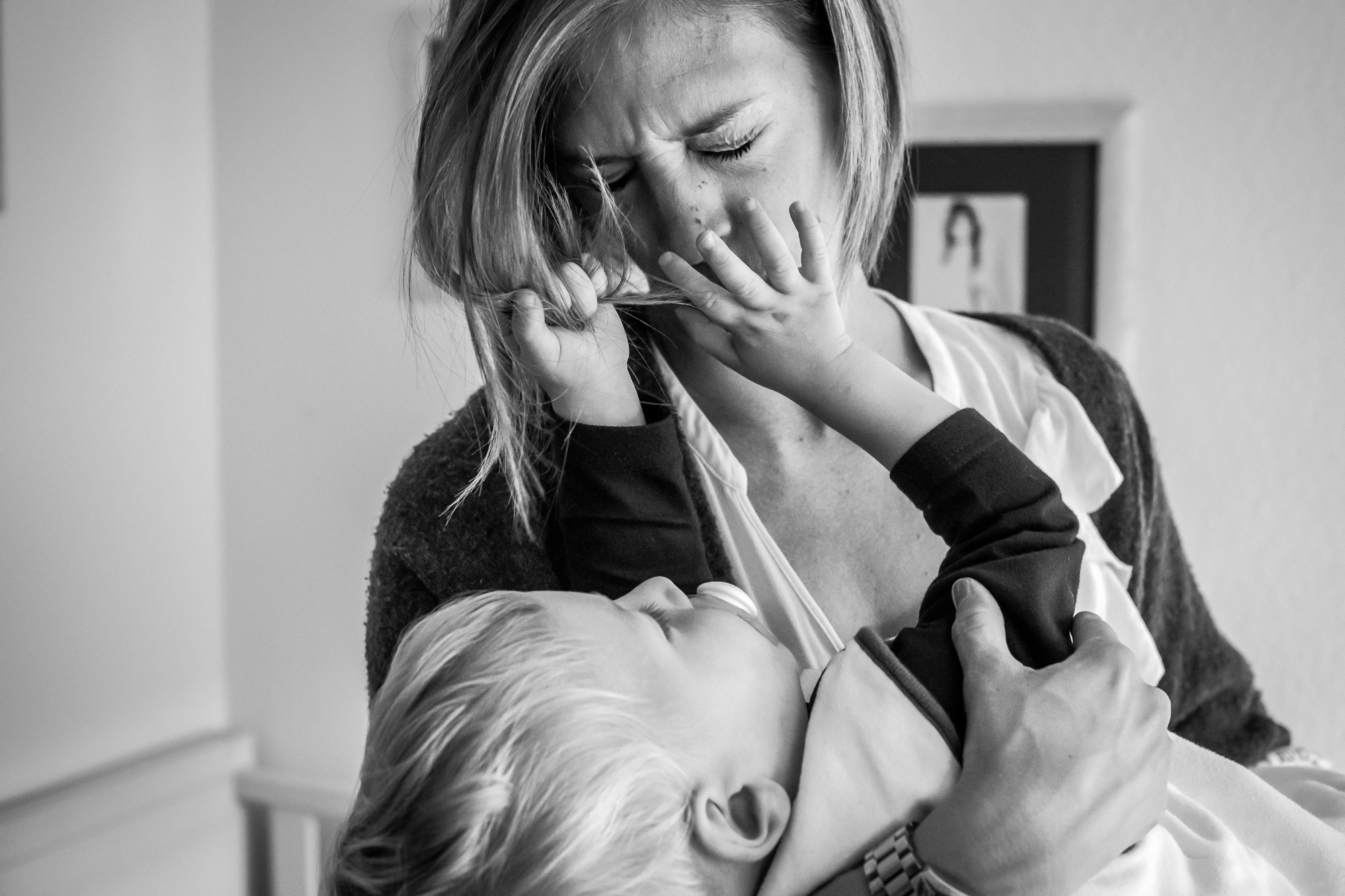 Aniya: Love this session. I see your patience in the images, and I can imagine you waiting quietly for moments. I also see that you make moments when your subjects are completely unaware of you and you use elements to frame and shoot through (the flowers and the kiddos playing, and then the glass framing the little girl reading).
Aniya: Love this session. I see your patience in the images, and I can imagine you waiting quietly for moments. I also see that you make moments when your subjects are completely unaware of you and you use elements to frame and shoot through (the flowers and the kiddos playing, and then the glass framing the little girl reading).
But on the flip side, you aren’t afraid in anyway to get extremely close, as seen where the mom is feeding her son, and then the son is pulling moms hair?
Do you prefer one way of shooting over the other? Are you equally comfortable getting close to your subjects and keeping your distance, and how do your clients feel about you getting right in there?
Often I only notice how close I have gotten to people when culling my images. During the session I do not feel uncomfortable and my clients tell me they didn’t either. My advantage is that I am using a small camera. I am working with the Olympus OMD – EM 1 and use the tilting LCD a lot. I can see the image live on the monitor, adjust the composition, light, focus, etc. and so it is not my full face that is close to the mom and kid but just the camera. I think this helps me a lot not to physically cross certain lines of privacy. When I am witnessing a quiet moment, e.g. the mother trying to put her baby to sleep, I switch the camera into silent mode though risking more shutter shock.
I usually stick to one position for quite some time to see how a moment will work out before changing position, so I am not running around hectically but try to change my position rather slowly.
I love getting real close, especially when parents are cuddling their kids but sometimes it will take some time for the kids to adjust to it. The mothers know not to look into the camera but a lively two-year old will often try to put on a show for the camera. I never tell them they should stop it but I simply switch to silent mode and not gratify their behaviour with a “click”. That way they quickly lose interest in me and get on with what they were doing in the first place.
But I want to show all aspects of my clients’ lives so I also step back a lot to show more context: the place they live in, people interacting with each other. And, of course, during the course of a whole day, there are times when not much is happening. That gives me the opportunity to look for interesting angles and compositions which otherwise might get lost in the action.
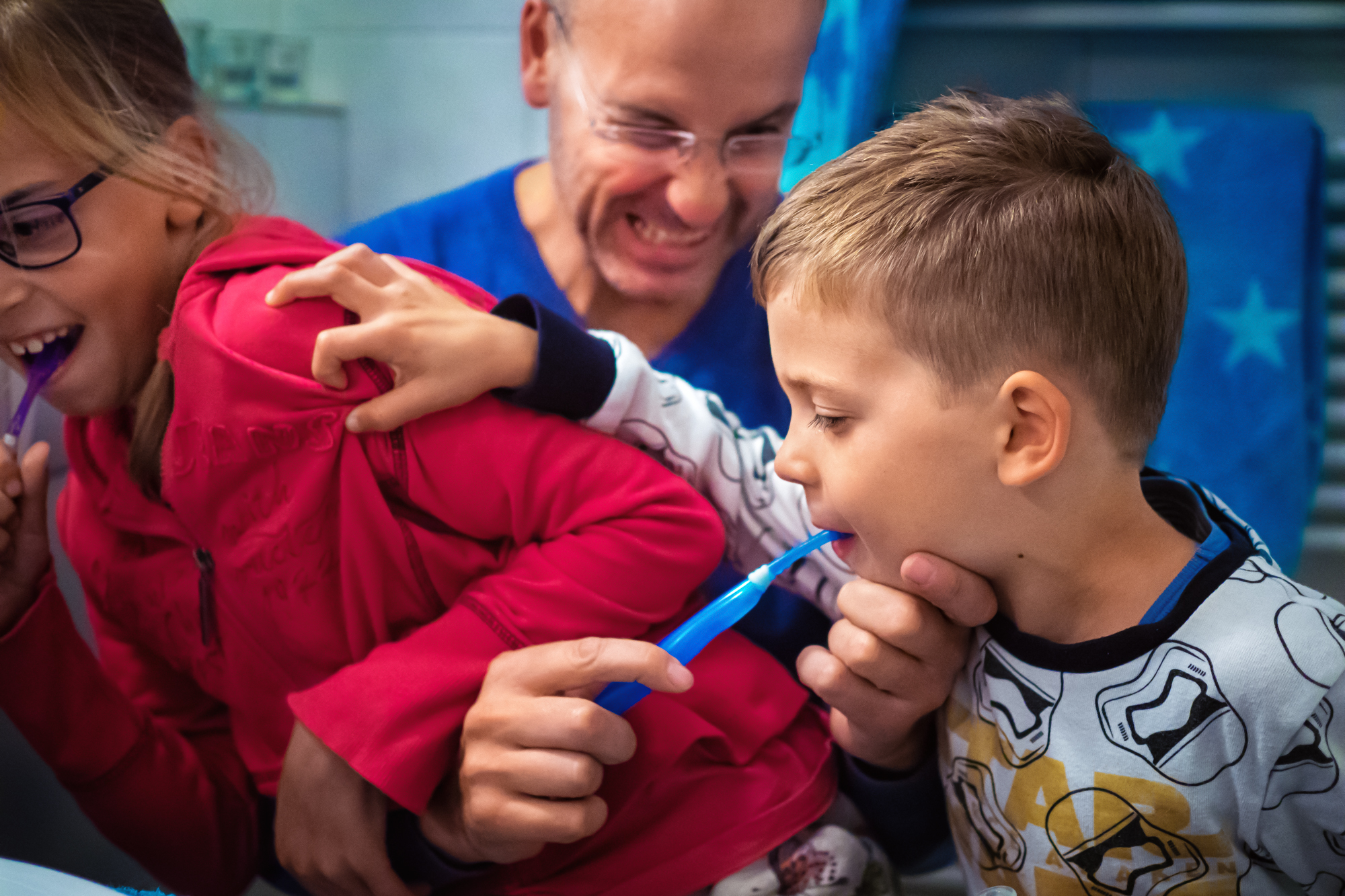 *****
*****
Want information on how you can be a featured artist? Check out our submission page for all the details.
One thought on “Featured Session – Katrin Küllenberg”
Comments are closed.